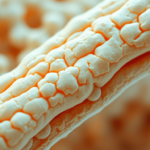-
 Videos
Videos
-
 Slides
Slides
-
 Summaries
Summaries
🗃️ Recall
-
 Cornell notes
Cornell notes
-
 Flash cards
Flash cards
-
 Quiz
Quiz
-
 Q-Bank
Q-Bank
Bone & Cartilage
🌟 Cues
- Structure of Cartilage
- Three Types of Cartilage
- Structure of Bone
- Types of Bone Cells
- Two Types of Bone
🗒 Notes
Cartilage:
- Hyaline Cartilage:
- Common sites: trachea, bronchi, costal cartilage, articular surfaces, epiphyseal plate, fetal skeleton.
- Structure: Perichondrium (outer fibrous & inner chondrogenic layer), cartilage matrix (collagen type II, chondroitin sulphate, glycoprotein), chondrocytes in lacunae.
- Elastic Cartilage:
- Common sites: ear pinna, external auditory canal, epiglottis, Eustachian tube.
- Structure: similar to hyaline, but with elastic fibers.
- Fibrocartilage:
- Common sites: intervertebral discs, symphysis pubis.
- Structure: lacks perichondrium, contains both hyaline cartilage and dense connective tissue with type I collagen.
Bone:
- Structure of Bone:
- Periosteum (outer fibrous, inner osteogenic layer).
- Endosteum (lines bone marrow cavities, rich in osteogenic cells).
- Bone matrix (organic: collagen type I, chondroitin sulphate, inorganic: calcium and phosphorus crystals).
- Bone Cells:
- Osteoblasts: synthesize bone matrix.
- Osteocytes: maintain bone matrix, deposit calcium.
- Osteoclasts: resorb bone, remodel, remove debris.
- Types of Bone:
- Compact bone: found in diaphysis of long bones, Haversian systems (osteons).
- Spongy bone: found in epiphysis, no Haversian systems, irregular trabeculae.
📝 Summary
This lecture covers the structure and types of cartilage and bone. Cartilage is categorized into three types—hyaline, elastic, and fibrocartilage—based on structure and location. Bone has a more complex structure, including periosteum, endosteum, and bone matrix, and is made up of four types of cells: osteoblasts, osteocytes, osteoclasts, and osteogenic cells. Bone also exists in two forms: compact and spongy, each with distinct structural features.

